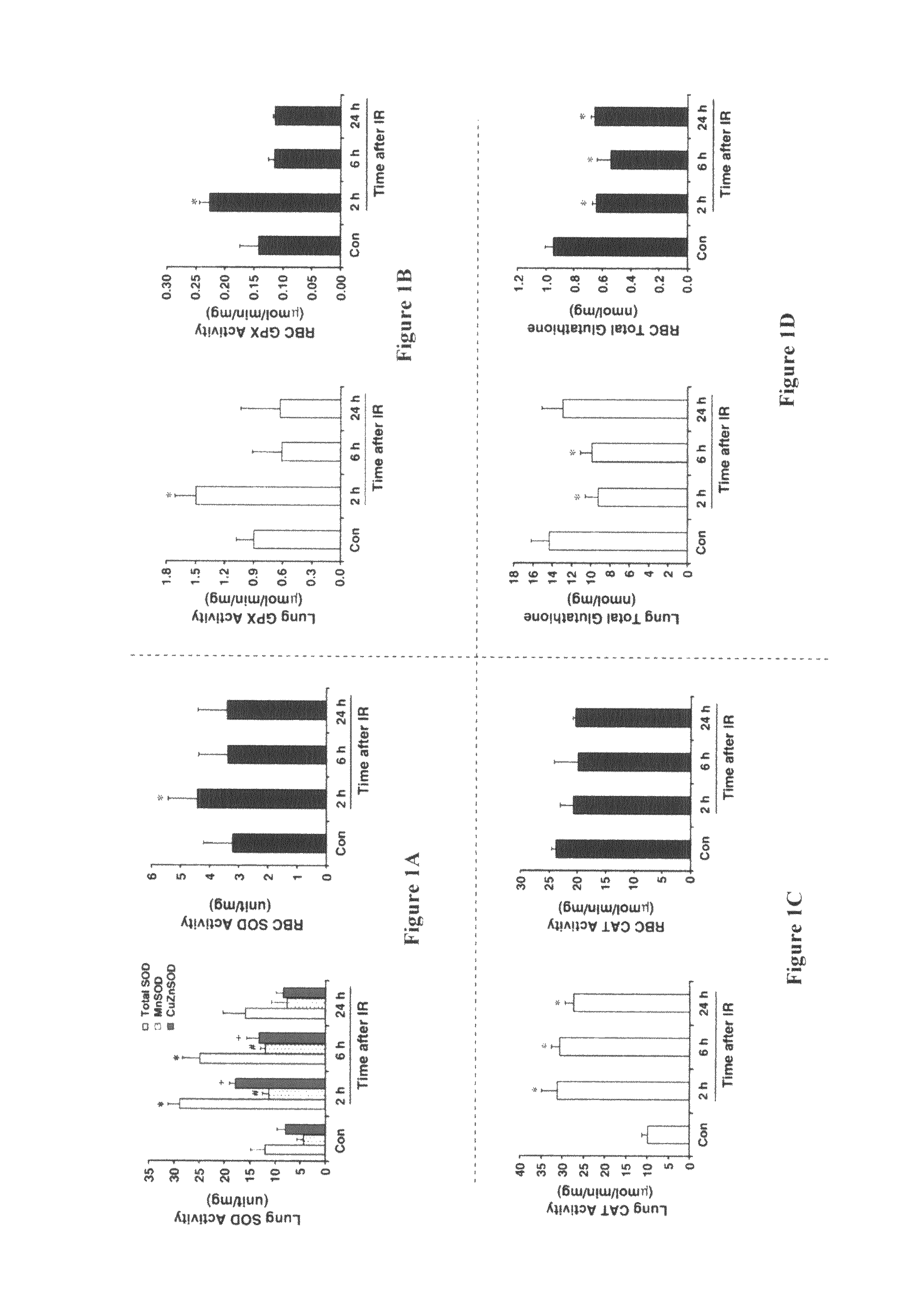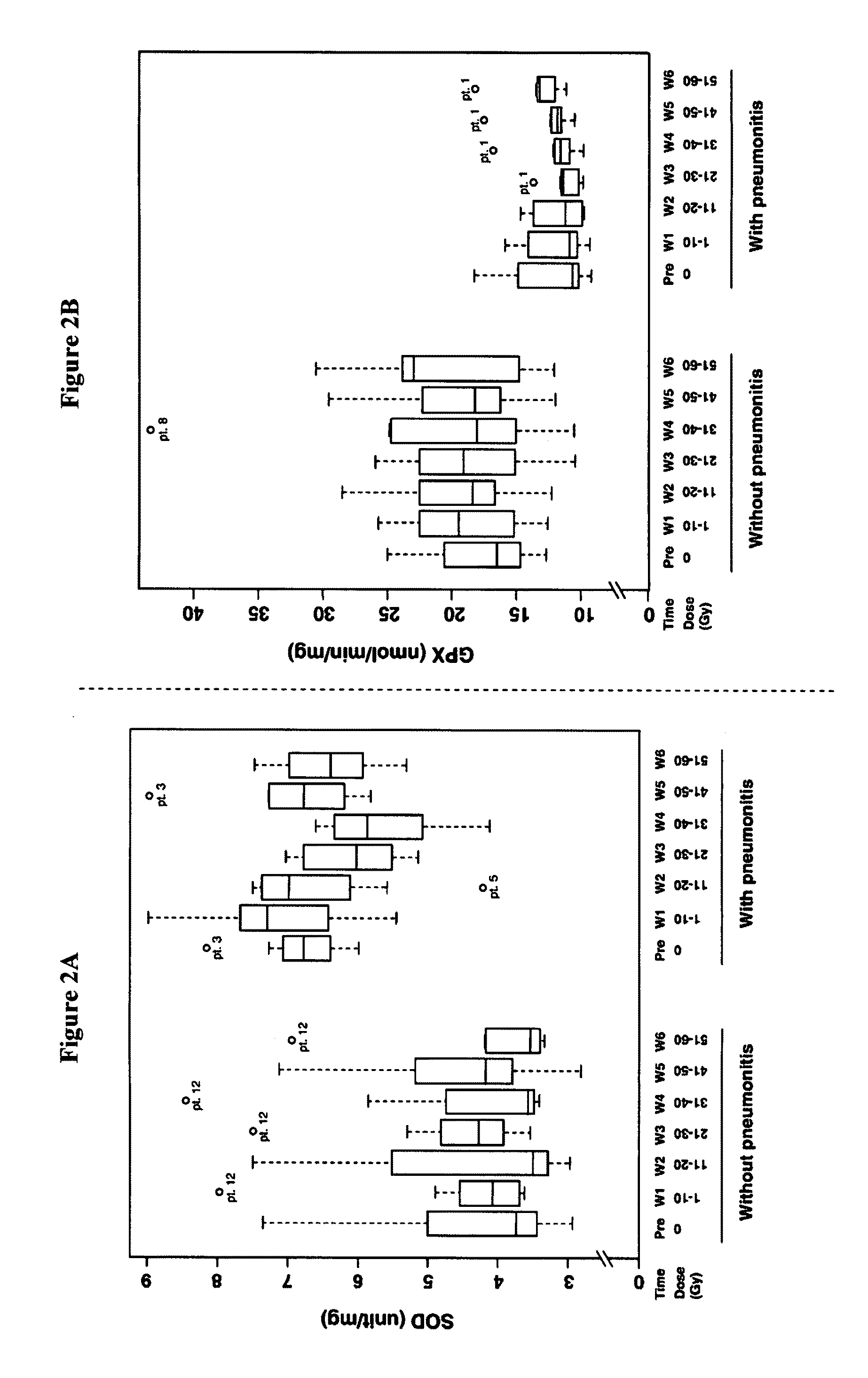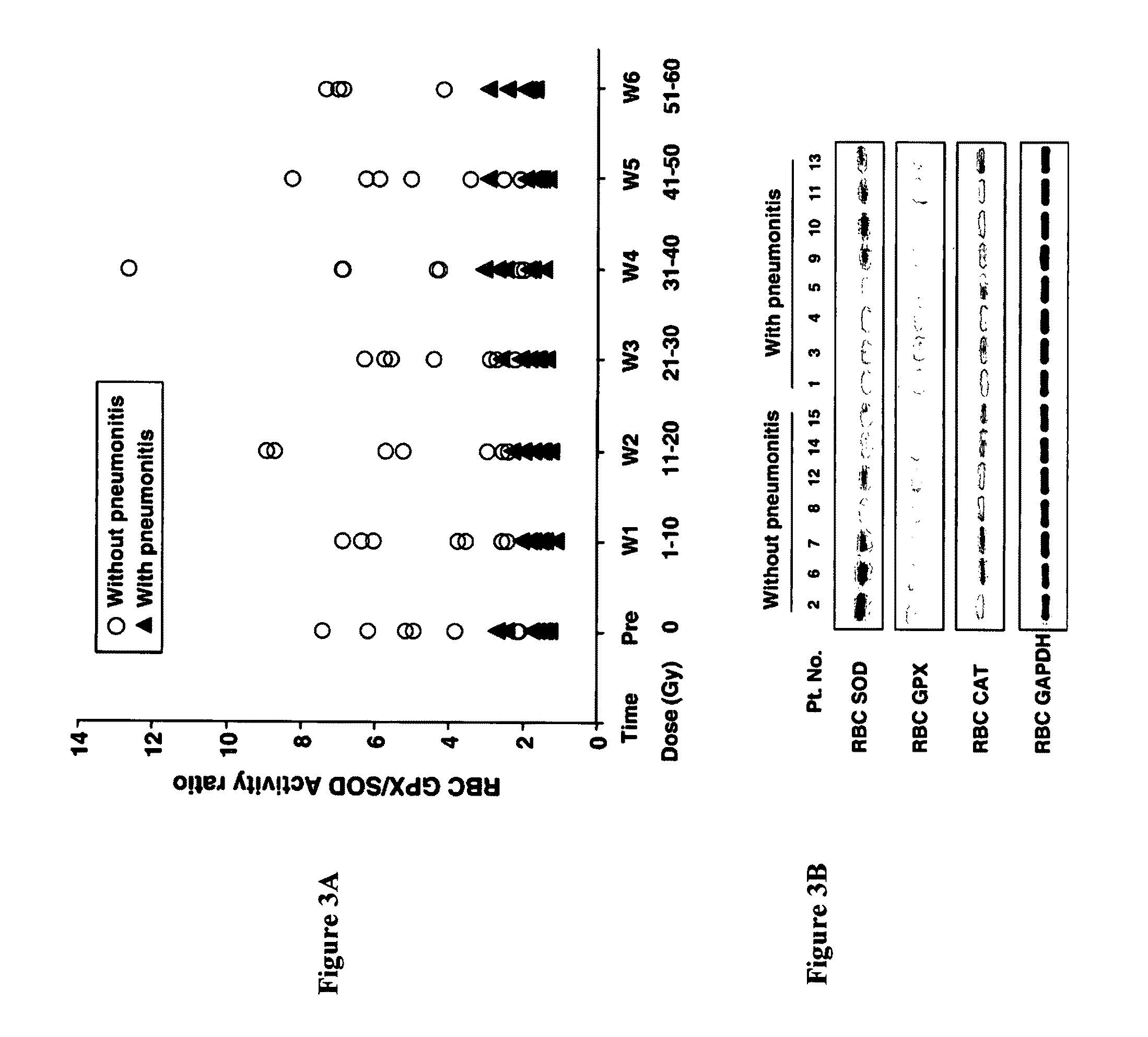Method for predicting susceptibility to radiation pneumonitis
a radiation pneumonitis and susceptibility prediction technology, applied in the field of cancer treatment, can solve the problem of individual and achieve the effect of powerful predictor of susceptibility to radiation pneumonitis
- Summary
- Abstract
- Description
- Claims
- Application Information
AI Technical Summary
Benefits of technology
Problems solved by technology
Method used
Image
Examples
example 1
[0020]This Example provides a comparison of the antioxidant defense systems of lung tissue and of RBC in radiation pneumonitis-sensitive C3H / HeN mice
[0021]To obtain the data presented in this Example, male C3H / HeN mice (5 to 6 weeks old) were used. Inbred C3H / HeN mice manifest pulmonary injury patterns similar to those of humans when irradiated [Franko, et al. (1991) Radiat. Res. Vol. 126, pp 349-356; Chiang, et al. (2005) Int J. Radiat. Oncol. Biol. Phys. Vol. 62, pp 862-871]. Whole body irradiation (10 Gy) was performed by using 4 MV photon beams (MeVatron, Siemens, Germany). Irradiation dose was calculated at the mid depth of mice in the field size of 40 cm with a dose rate of 0.2 Gy / min according to standard methods and essentially as previously described [Park, et al. (2001) J. Biol. Mol. Biochem. Vol. 34, pp 544-550]. Mice were sacrificed and the lungs were removed at the specified time after irradiation. The tissues were washed and frozen by freeze-clamping with dry ice-coole...
example 2
[0024]This Example illustrates selection, treatment, and statistical methods used in connection with analysis of human patients according to the method of the invention.
[0025]Patients with surgically unresectable stage IIIA / IIIB nonsmall-cell lung cancer (NSCLC) were recruited. Blood samples from patients undergoing concurrent chemo-radiotherapy on Institutional Review Board (IRB)-approved clinical protocols were used for this study. Informed consents were obtained from all patients before registration. To minimize potential confounding factors, only those patients receiving concurrent definitive radiotherapy and paclitaxel-based chemotherapy were included. Patients were excluded if they had received inductive radiotherapy, chemotherapy, or prior thoracic radiotherapy. Patients with unfavorable Eastern Cooperative Oncology Group (ECOG) performance status (2 or greater) or chronic obstructive pulmonary disease (COPD) were also excluded. Staging evaluations included history, physical ...
example 3
[0028]This Example provides an analysis of GPX and SOD activities in RBCs of the patients before and during therapy.
[0029]To test whether differences in the enzyme activity of the RBCs might be correlated with radiation pneumonitis susceptibility, non-small-cell lung cancer patients receiving concurrent radiotherapy and chemotherapy had serial blood collections before and during treatment. A total of 15 eligible patients were treatment-naive, and had stage III disease with good performance status (0, 1) and normal organ function. The characteristics of these 15 patients are summarized in Table 1. Based on the RTOG / EORTC criteria, 8 patients out of 15 experienced the symptoms of pneumonitis within 3 months after completion of treatment.
[0030]
TABLE 1Number ofCharacteristicspatients%Number of patients15100Age, yearsMean61Range44-74SexMale533.3Female1066.7ECOG performance status0746.71853.3AJCC clinical stageIIIA320.0IIIB1280.0RadiationConformal 3D853.3IMRTa7ChemotherapyYes15100.0Concur...
PUM
| Property | Measurement | Unit |
|---|---|---|
| size | aaaaa | aaaaa |
| pH | aaaaa | aaaaa |
| time | aaaaa | aaaaa |
Abstract
Description
Claims
Application Information
 Login to View More
Login to View More - R&D
- Intellectual Property
- Life Sciences
- Materials
- Tech Scout
- Unparalleled Data Quality
- Higher Quality Content
- 60% Fewer Hallucinations
Browse by: Latest US Patents, China's latest patents, Technical Efficacy Thesaurus, Application Domain, Technology Topic, Popular Technical Reports.
© 2025 PatSnap. All rights reserved.Legal|Privacy policy|Modern Slavery Act Transparency Statement|Sitemap|About US| Contact US: help@patsnap.com



